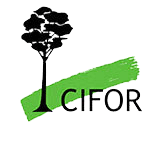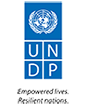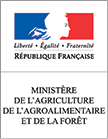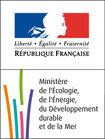
Six years ago I got a phone call from Silvy at the Belgian Development Agency, to tell me that one of their programmes in Peru needed someone who could make maps and speak Spanish. She started telling me to consider well, as this was in a rather remote small jungle village, but before she could finish I said “I’ll go”; that’s how my career in development cooperation began.
The Agency had started their Junior Programme, which offered the opportunity to young people – with much less impressive curricula than normally required – to have a professional experience for two years in one of their programmes.
And so, only a few weeks after the phone call, I plunged into an exciting mixture of field work in cloud forests, capacity building of smallholder coffee farmers, vegetation mapping, cumbia and ceviche. But it wasn’t all merry and joy, of course. Poverty and inequality are still very prominent in many parts of Peru, and although over the last few decades the country has been characterized by strong economic growth, much of it is at the cost of its very valuable natural resources, especially its forests.
Peru is also one of the most vulnerable countries to the consequences of climate change. Changing rainfall patterns and increasing occurrence of extreme events are aggravating other environmental problems, and are having an increasing impact on the economy – especially so for smallholder farmers – mainly through landslides, flooding and crop losses.
Out in the field, I would stand in awe of enormous Podocarpus trees, only to see the next day on my screen satellite imagery of the patterns of rapid deforestation. Being invited to a generous lunch by the very same farmers who were clearing those hills, trying to make a living for themselves and their family in a context that didn’t give them much options, I began to get a notion of the complexity of it all. I was witnessing both the causes and consequences of climate change in the landscape I was working in, how it is all intertwined and so much broader than just an “environmental” matter, and how solving this global problem wouldn’t be possible with a linear or problem-tree like approach.
From then on I have stayed in Peru – with the occasional trip to Belgium – working for three programmes of the Belgian Development Agency, all of which were focused on complimenting environment and income improvement. Currently I am working for PRODERN II, which seeks poverty reduction through strategic natural resources management. Together with the ministry of environment, we are trying to develop better ways of getting a larger share of income out of the enormous richness in biodiversity and ecosystem services.
PRODERN has been explicitly implementing a landscape approach: balancing economic, environmental and social interests; integrating territorial management at different levels of scale; using principles of landscape ecology; working in an integrated way on a broad range of subjects such as biocommerce, environmental education, environmental governance, retribution for ecosystem services,…with all their respective stakeholders; and with climate change as a transversal component. It’s not always that easy, but we are learning valuable lessons, and getting the message through with local, regional and national authorities
Last year I was able to assist the GLF 2014 in Lima, where I was quite happy to see the impressive amount of recognition and support for the approach. I got really motivated to become more actively involved, so I applied for the YIL-initiative, hoping to be able to contribute with lessons learned in the field and government buildings about implementing the landscape approach.
Pieter Van de Sype is one of the 10 young champions who will work on the “ Rights and Tenure” Landscape challenge with Youth program’s partner: CIFOR.
Learn more about the Global Landscapes Forum’s Youth program, meet our 50 youth champions and discover the 5 Landscapes challenges they will take up, in December, in Paris.





































